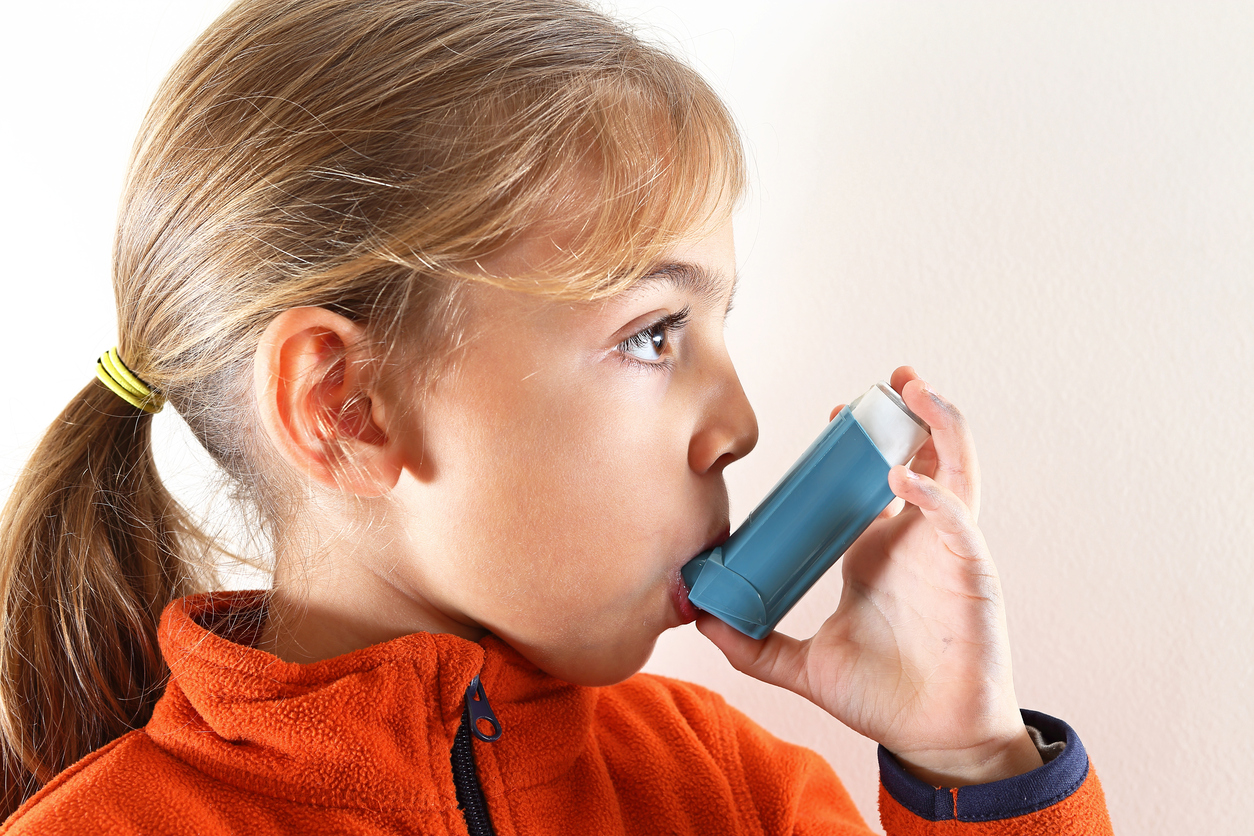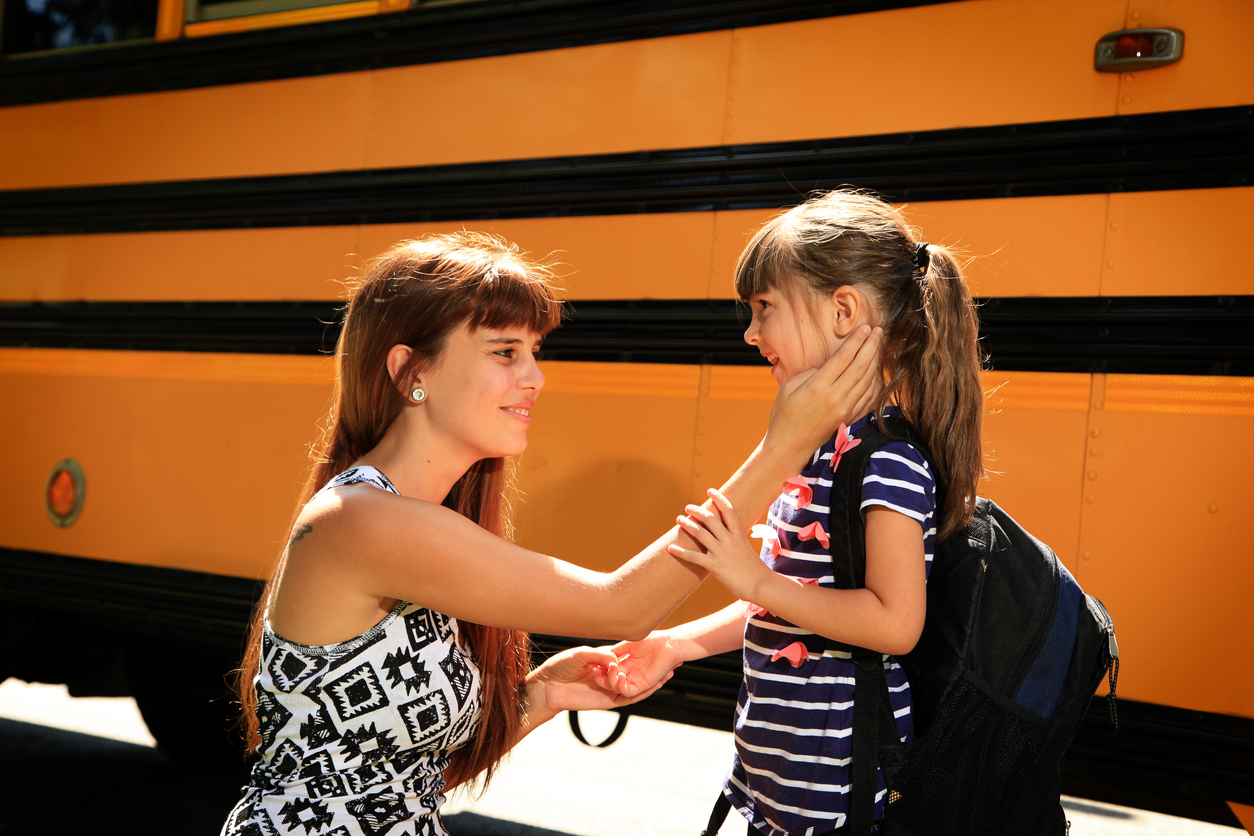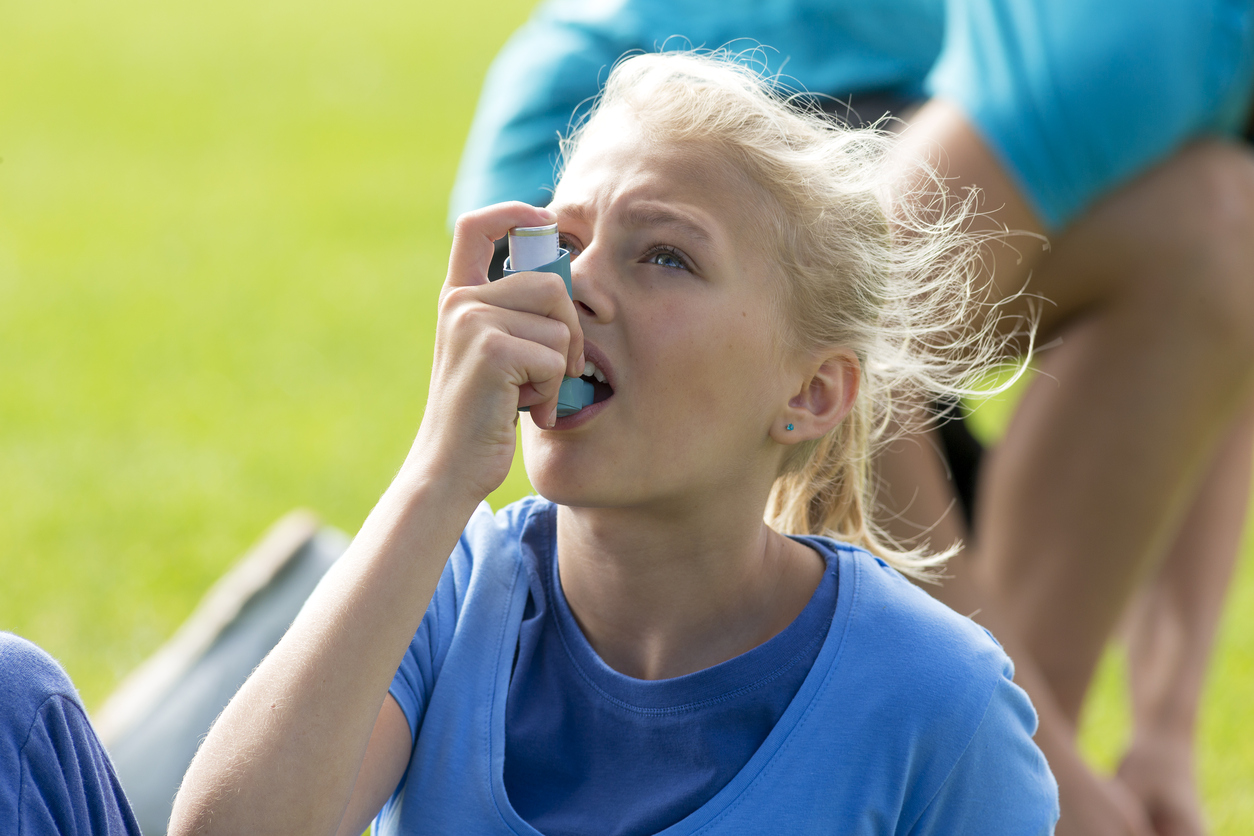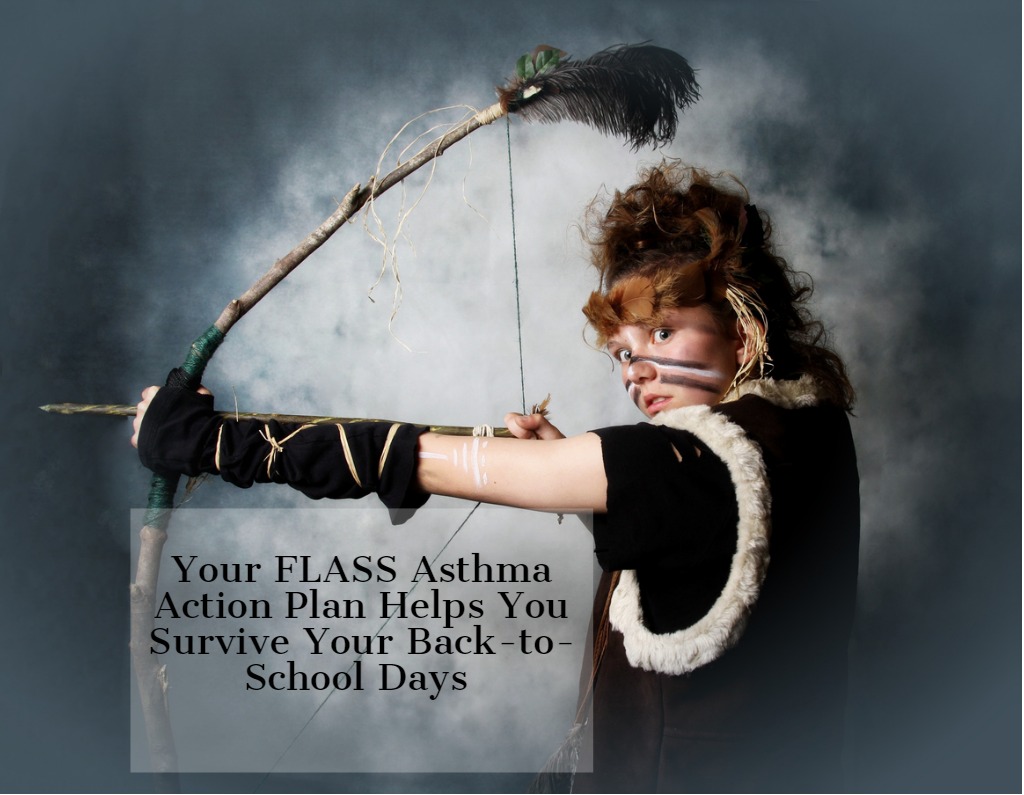Back-to-School time is here. Summer vacation seems to have ended abruptly. In our previous blog, we introduced some Back-to-School tips to help make the transition to school easier for students who suffer from asthma. Fall has gone on display in all the Back-to-School store windows. And there is a whisper of the changing season in the breeze. But all of these seasonal changes can bring new triggers and challenges to the child or the adult who has asthma.
FLASS Top Tips for Going Back-to-School with Asthma

Proper use of the asthma inhaler is just as important as remembering to carry it.
We began our Back-to-School list with such tips as:
- checking your child’s FLASS Action Plan,
- renewing asthma medications,
- and taking a special visit to your child’s school. If you missed our previous blog, please check it out for the details of these tips and an interesting asthma story. And now we resume our list for Part 2 of going back to school with asthma.
Back-to-School Tip #4: Discover Your Child’s School Policies and Protocols
Find out how your child’s school has handled asthma episodes in the past. Did you know that an asthma attack cannot be faked? Be certain they know that.

Putting your child on the school bus for the first time can be tough. It’s even tougher when she has asthma. “Can it be “faked?” Be sure they know it cannot.
The American Lung Association also advises that you meet, call or e-mail after-school coaches, teachers, and even bus drivers. According to the CDC, they all “should be trained on how to respond to a variety of medical emergencies, including asthma attacks.”
Did you know some school bus drivers and districts minimize idling time because the emissions can trigger an asthma attack in some children? That’s the kind of action that creates an asthma aware environment for learning and safety.
Tip Number 5: No Back-to-School Peanuts
Notify the school of your child’s food allergies. Of course, you must inform the school administrators of any known food allergies, but do not stop there. You must also realize an exacerbation might not be completely the fault of the school.

Prepare you child to avoid food allergies, even during a back-to-school dare.
You must train your child to avoid—and to resist–trigger foods.
In another Back-to-School story from this blogger’s personal history, I will never forget how sick I became after dumping an entire bag of peanuts in my Coca-Cola bottle on a dare. Yes, I wolfed down that concoction.
And no, I did not tell my mother about it. I had my rescue medicines with me, but I sure scared my friends. To this very day, I remain a little embarrassed.
The moral of that little story is that my school allowed me to carry my inhaler and my epinephrine. The lunchroom playground seemed to be a half a mile from the classrooms.
I am sure it wasn’t that far, but it was far enough to be dangerous. Did you know, “For a child who is struggling to breathe, the trip from the classroom or playground to the school health room for medication can be perilously far? All 50 states have laws that allow children to self-carry and use their asthma inhalers at school.”
Tip Number 6: Do not Say “No” to Gym

Children of any age, even teens need to be reminded to carry their rescue inhalers. Physical exercise can be a trigger.
Did you know that when your child has physical activities, pre-treatment is a better option than canceling physical activity? FLASS believes you should encourage him or her to stay physically fit in spite of asthma.
Perhaps your child will simply need to take a pre-treatment before playing. Another caution is to remind your child to keep the inhaler available during gym or physical education class.
Physical exercise is a trigger for some asthmatics. But they can often control it with pre-medication and their inhaler.
A Quiet Victory for Asthma Sufferers
Personally, my special hiding place for my “puffy,” as I called it, was rolled into my sock for Volley Ball. Then one year later, my classmates who also suffered from asthma and I qualified to enroll in a mysterious class called X-gym.
It wasn’t until the first day of school that they opened the mysterious box of equipment for Traci Gonzales. Traci is a pediatric nurse practitioner and American Lung Association volunteer spokesperson. She stated, “Asthma is a leading chronic condition that causes students to miss school, which can directly affect their academic success.”

Back-to-School holds no asthma threat when you have a FLASS asthma action plan for protection.
She validated this blog perfectly when she added, “Properly managing a child’s air quality and environment while following a physician-prescribed treatment plan can truly transform a child’s life, allowing them to perform better in school, build confidence in sports and simply get outside and play.” For more information on asthma in school, we suggest parents check out this reliable online resource
At FLASS, our health providers and staff believe, “Parents who ask questions about asthma management in school can help transform any school into an environment that supports both learning and safety.” Remember the bus driving example given up above. Parents, school, and community working together can enact strategies like that to create a better environment for all children. This occurs even as they work to improve conditions for children with asthma.
And we here at FLASS, we will undoubtedly be bringing you more about Back-to-School asthma and autumn allergy triggers in upcoming blogs. Until then, thank you for reading the blog at Florida Lung, Asthma and Sleep Specialists and Welcome Back to “Back To School.”

